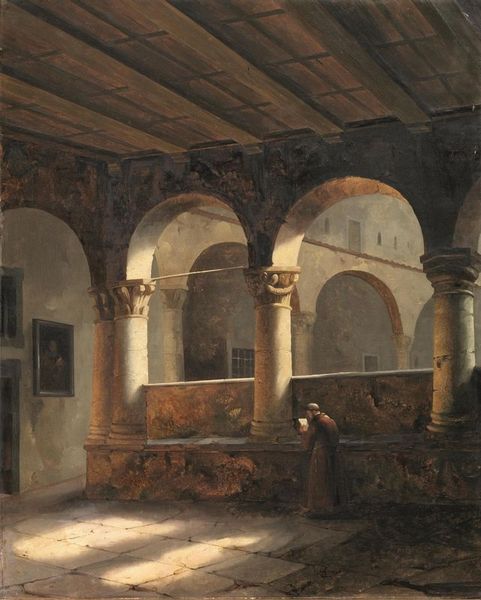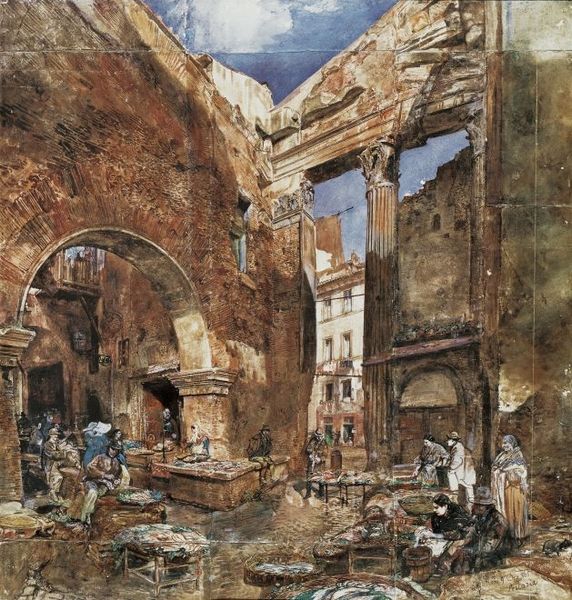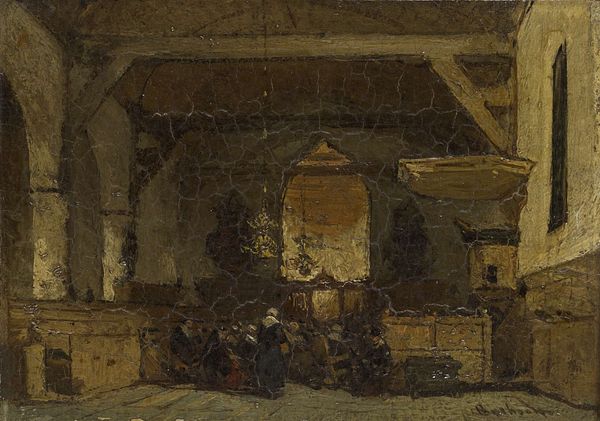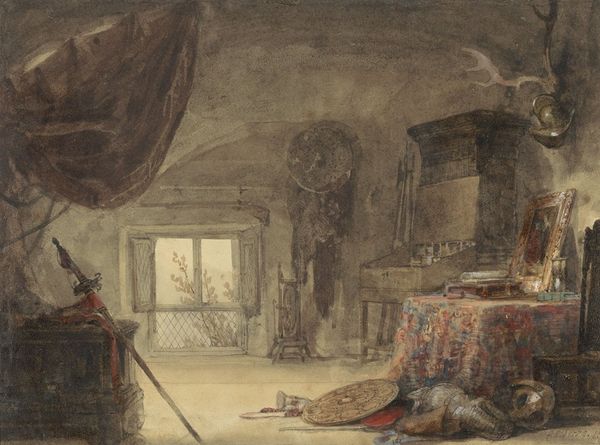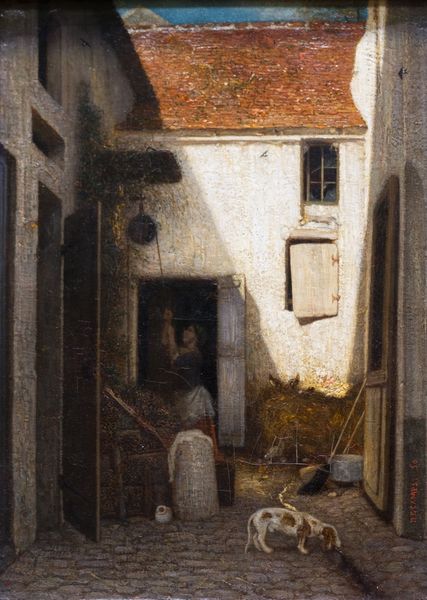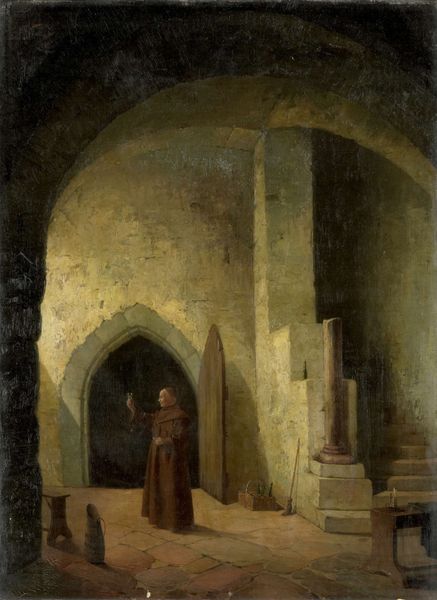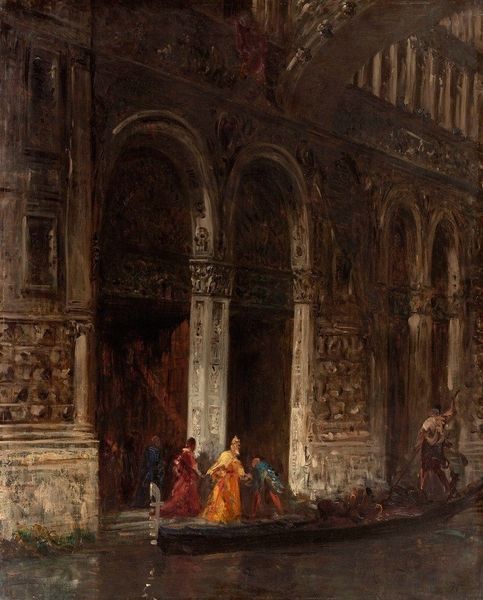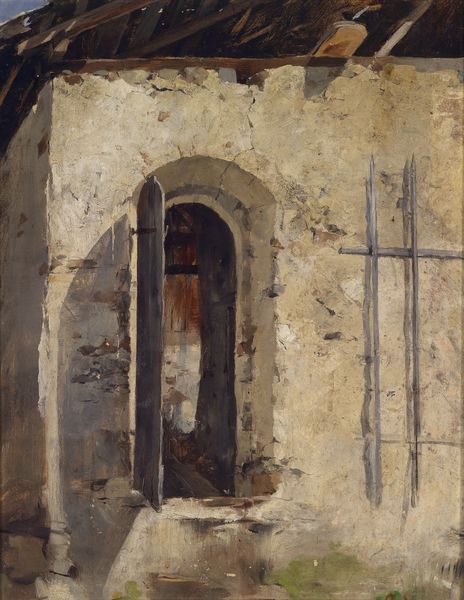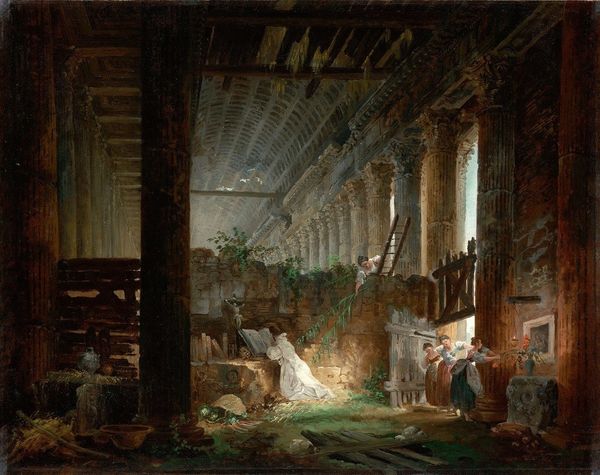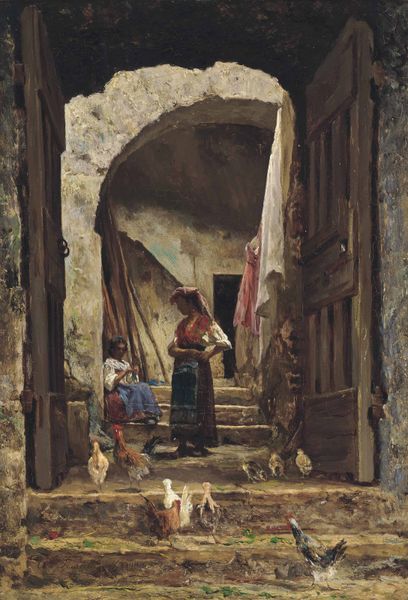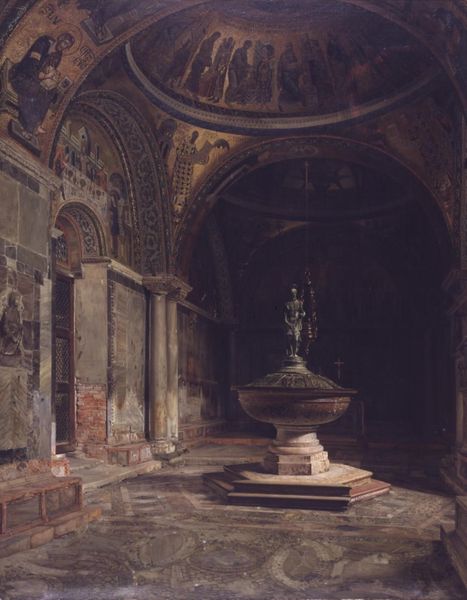
tempera, painting, mural
#
narrative-art
#
tempera
#
painting
#
sculpture
#
chiaroscuro
#
symbolism
#
islamic-art
#
history-painting
#
mural
Dimensions: 112 x 89 cm
Copyright: Public domain
Curator: The overwhelming feeling is of devastation, an aftermath shrouded in shadows. Editor: Precisely the emotional power that Vardges Sureniants harnessed in "Desecrated Shrine," painted in 1895. A tempera work reflecting Armenia's tumultuous history. Curator: You immediately sense the historical weight. It’s more than decay, it speaks of violent disruption, a sacred space violated, and tradition discarded, reflecting periods of great unrest. Look at the scattered books. Editor: The symbolism is poignant: books strewn, implying loss of knowledge and wisdom. The sleeping figure evokes profound sadness and loss. Then note the light that outlines the halo behind him. Is he alive? Is he dead? The heavy stones surrounding it and weighing down on him could suggest he may as well be. It could represent perseverance, like a symbol for carrying an Armenian soul across many years of torment. Curator: Sureniants completed the mural around the turn of the century during an era of escalating tensions within the Ottoman Empire and Russia and among Armenians, revealing through imagery the societal fracture of Armenia, using artistic means to advocate social transformation. The state of the Armenian church became of outmost symbolic importance for its self-preservation. Editor: And that destruction of order. It transcends a single historical moment. We can see it mirrored across cultures, can’t we? Any faith feels violated when viewing "Desecrated Shrine." Curator: Indeed. What remains potent here is not just the desecration, but Sureniants' commentary on cultural vulnerability when caught amidst major political unrest and ethnic clashes, and that makes the viewing of this work especially emotional to the 21st century viewer in any region. Editor: Looking closer, I see resilience intertwined with ruin, don't you? It makes the somber colours seem more than tragic. It adds hope too. Curator: Yes, the work embodies that dichotomy perfectly. A grim, necessary reflection for Armenians.
Comments
No comments
Be the first to comment and join the conversation on the ultimate creative platform.

